How to Dry Firewood Super Fast: 10 Easy Tips
-
Chris Dinesen Rogers
- Last updated:
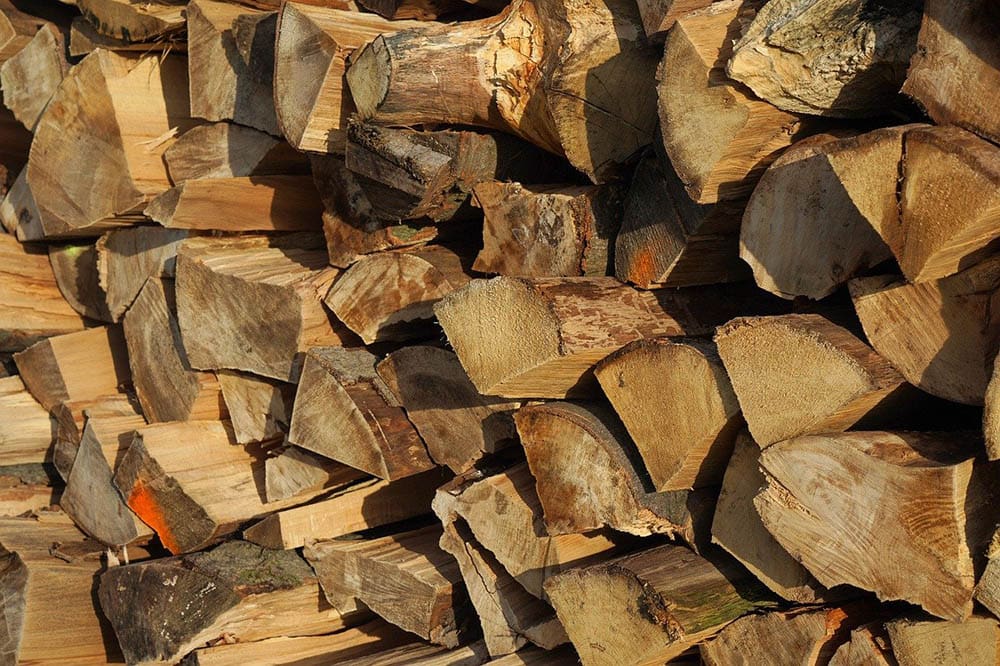
Few images are more romantic than gathering around a campfire and staying warm on a cool fall evening. However, for some, it’s their primary source of fuel. The US Energy Information Administration (EIA) estimates that’s the case for about 1.8 million American households. Therefore, it’s essential to know how to dry firewood super fast.
However, firewood burns at varying rates with different amounts of heat output measured in British thermal units (BTUs). The higher the figure, the greater the warmth. Its moisture content is another mitigating factor. Freshly cut wood can contain 60% or more. The US Environmental Protection Agency (EPA) recommends only burning dry, seasoned wood.
 The 10 Tips to Dry Firewood Super Fast
The 10 Tips to Dry Firewood Super Fast
1. Choosing Softwood vs. Hardwood
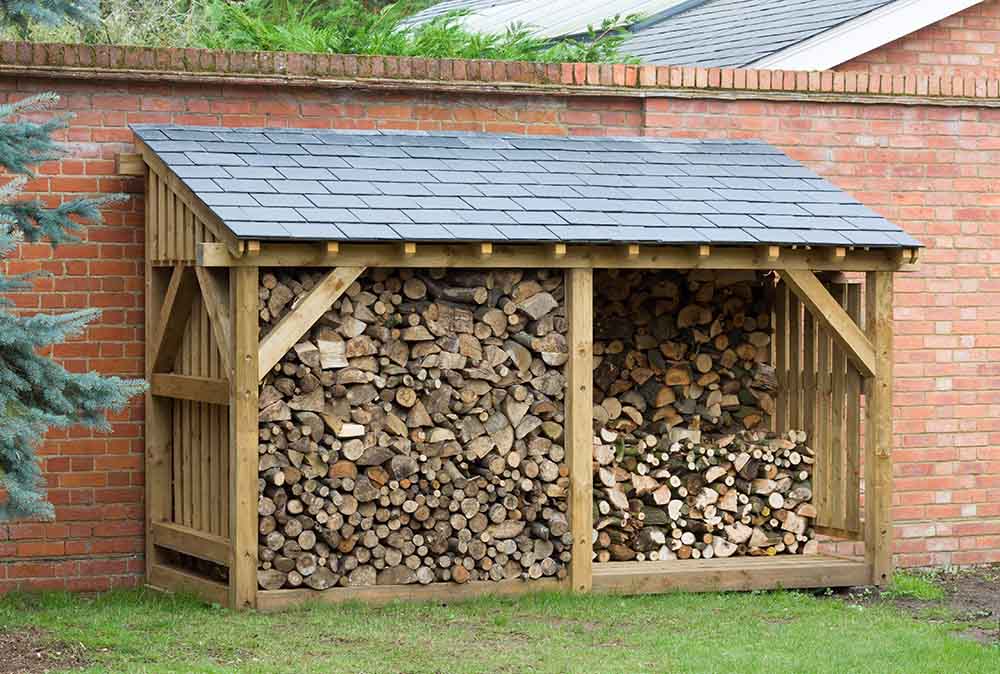
Firewood is generally classified as either softwood or hardwood. The former includes species such as White Pine or Eastern Red Cedar. Familiar hardwoods are White Ash and White Oak. The former typically has a lower energy potential with lower moisture content. The opposite is true of the latter. It also means that these species take longer to season. Therefore, the kind you use matters when drying.
Let’s consider this tradeoff in more detail. When you buy firewood in quantity, it typically is sold in cords, measuring 8 feet long by 4 feet wide by 4 feet high. A cord of White Pine yields about 13.3 million BTUs. On the other hand, the same amount of Shagbark Hickory delivers about 24.6 million BTUs. However, you’ll be putting a log of the former on the fire a lot sooner than the latter, even if it burns longer.
2. Making the Cuts Count
You can optimize the drying time by maximizing the surface area exposed to the air around it. That makes how you cut it a big difference in how soon you can use the firewood. With all things being equal, it’s going to take about 9–12 months to season the wood fully. We suggest saving yourself some time at the firepit by cutting it into the usual size you burn. It’ll also make our other tips easier to do.
It’s also a smart idea if you have a limited amount of space for storage. You’ll find it more manageable to stack wood of about the same size versus a myriad of lengths to piece together.
3. Splitting Logs
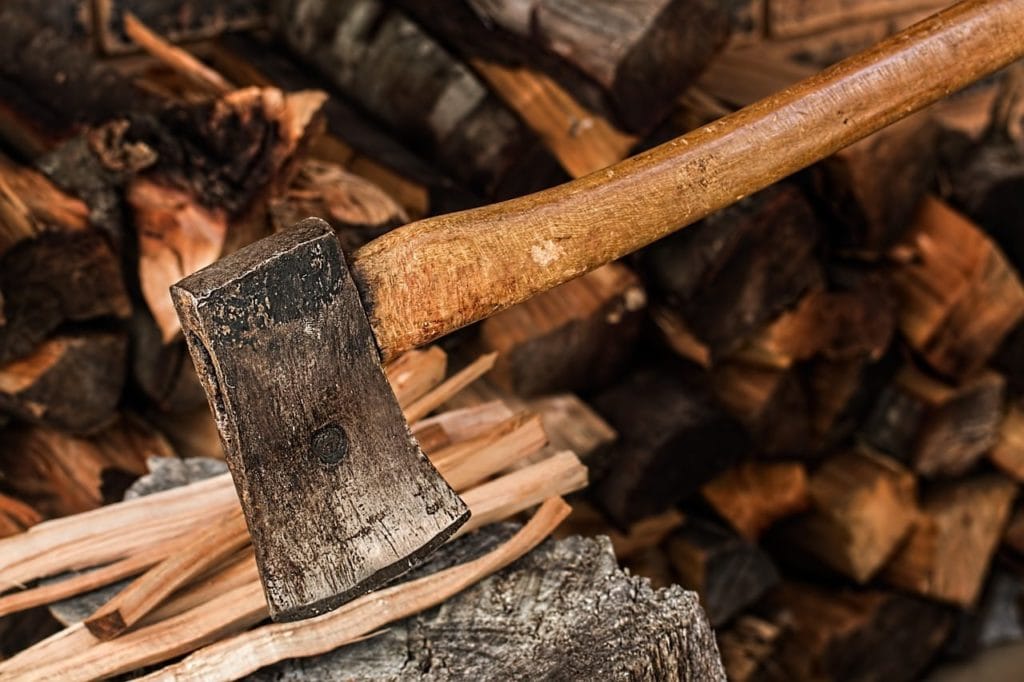
Splitting the logs will remove the protective bark layer that is trapping moisture in the firewood. You’ll also find that it makes hauling it to the fire easier, requiring less effort. Splitting involves breaking the larger logs into fractions of their former size. The best way to do it is to follow the path of least resistance by following the grain. The occasional knot makes it more challenging.
The surface area increase allows the wood to release more moisture to dry it out faster. You’ll likely see some cracks in the logs where Mother Nature has already started the task. Our advice is to follow the lead to minimize your effort. Using a splitting wedge will make the job less taxing.
4. Baking It in the Sun
Mother Nature can step up to the plate again by baking the firewood dry using sunlight and heat. Remember that green wood is incredibly moist, adding considerably to its weight. Ideally, you should get the moisture content to about 20%. The best way to monitor it is to use a wood moisture meter. High-tech models use electromagnetic waves instead of drilling holes to check this parameter.
We suggest making it as easy as possible for your firewood to bake in the sun. Put it in a single, well-spaced layer in a sunny location. If possible, keep it off the ground where water can pool and delay the process. Don’t worry about rain—it can help flush out the wood, making for cleaner fires.
5. Proper Storage
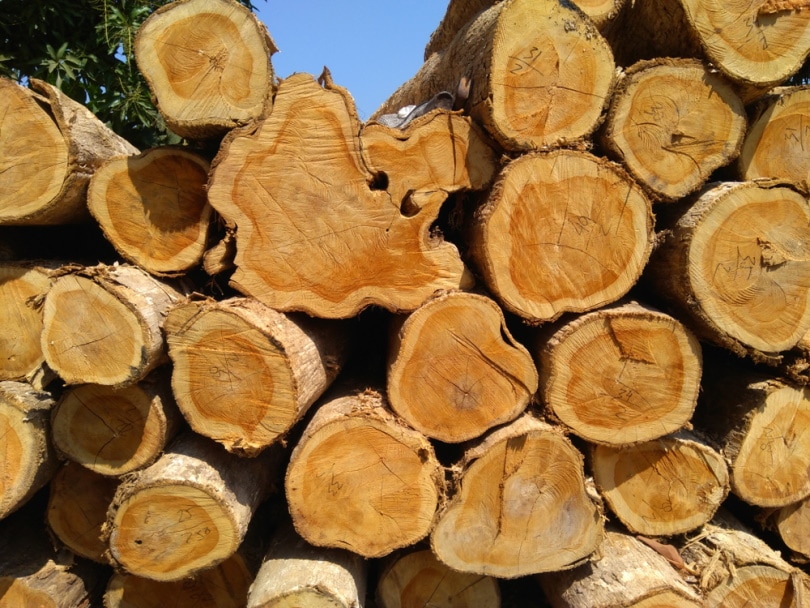
This tip builds on what we discussed in the previous one. Of course, you must keep other considerations in mind since a firewood pile is an open invitation to rodents and other pests looking for new digs. Therefore, we suggest storing your firewood away from your house but not too far when you have to bring a load in during the winter and through a foot of snow.
There are also safety concerns. After all, dry firewood sets up the perfect storm for a blaze in some place where you don’t want it. We strongly urge you to set up your wood pile at least 10 feet or more from any outbuildings on your property.
6. Keeping It Small
Like campfires, setting up a wood pile is an art. Small stacks with alternating layers will maximize airflow. It’s the best solution when you’re trying to store a cord of firewood. It takes up a lot of space even though all the logs are jammed together. The trick is to make sure every piece benefits from circulation to dry it as quickly as possible.
You may find it helpful to group the logs into various columns. That will make getting everything you need more straightforward when planning for a fire in the fireplace on a chilly winter evening. We suggest keeping some wood in the house to take advantage of the lower humidity indoors to dry the logs even further.
7. Gaps for Air Flow
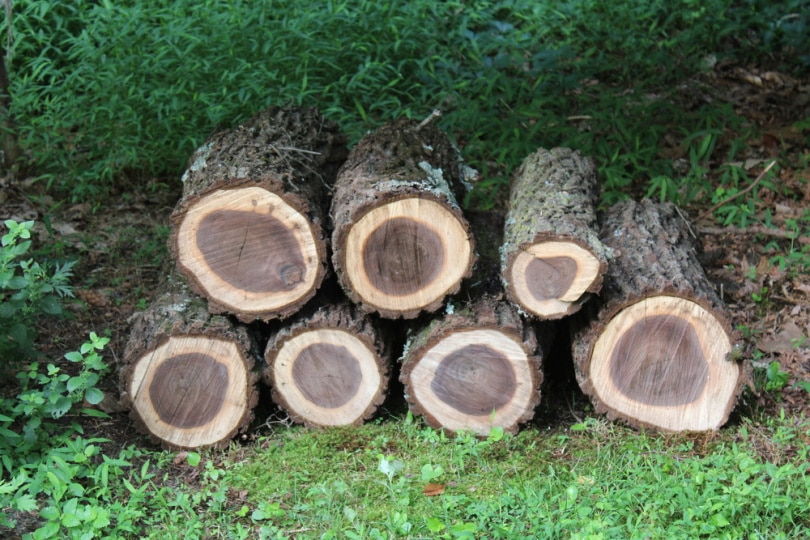
You should plan for gaps in between the layers of wood in your outdoor storage. Try to minimize how many logs sit side by side, touching each other. It’s unlikely that you will restack it often, other than removing pieces to use. You can crosshatch the logs to allow air to move more freely. Make the wood pile for work itself to let the sun and air do their jobs. That includes the bottom of the pile.
Instead of setting the wood on the ground, get a pallet to optimize airflow all around. You can check with your local home improvement store. They may be willing to part with one or two for free or for a nominal charge.
8. Covering It
Summer is the time to let the sun bake your wood dry. During the fall and winter, you can take advantage of the drier conditions to speed up the process. A tarp over the top of your wood pile will keep snow from accumulating and melting in the spring to delay seasoning. It shouldn’t be so tight that it impedes airflow. You can extend it over the side where the prevailing winds come from to avoid ice build-up.
9. Storing Indoors
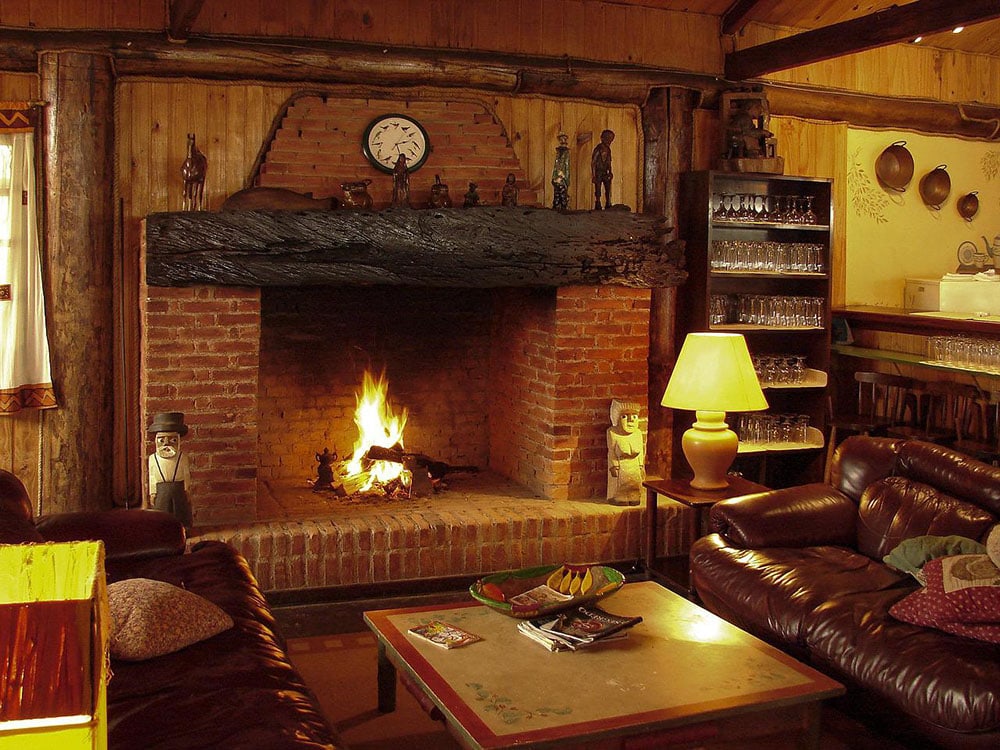
If it’s possible, you might consider storing at least some firewood in a garage or shed. Either will protect your wood from the elements. If it’s heated, you’ll be a step ahead of the game to draw even more moisture out of the pieces. Of course, you must keep the issues with nuisance wildlife in mind. You don’t want your firewood to be winter housing for mice and other pests.
If the space is dry, you can stack it against the walls as long as you keep it off the floor. You might even consider running a fan to speed things up to get the seasoned wood you want.
10. Cutting to the Chase
There’s another option that we’ve left for last for a good reason. It’s effective and faster than any of the other tips we offered. That is kiln drying. As the term suggests, an external source provides the heat and convection to dry wood quickly. The problem is that it isn’t cheap. The expense of running this equipment adds considerably to the cost. It’s something manufacturers typically use for lumber.
However, if you’re in a hurry, you can’t beat kiln-dried firewood. The high temps can get rid of any pests in the wood. Since it’s a controlled process, manufacturers can minimize damage to the end product. It’s an excellent choice if you want to store your firewood indoors.
 Knowing When It’s Dry
Knowing When It’s Dry
The next question you probably have is this: How do you know when it’s dry? Greenwood is heavy. If a log feels light when you heft it, it’s probably lost a lot of moisture. Remember that water weighs about 8 pounds per gallon. It also sounds different. If you smack two pieces together, you’ll hear a sharp, loud smack instead of a dull thud if it’s holding a lot of moisture. There’s also your wood moisture meter that will remove any doubt.
 Conclusion
Conclusion
Drying firewood takes time. There’s no getting around it unless you want to spring for the extra cost of kiln-dried wood. Even though Mother Nature isn’t in a hurry, there are several things you can do to speed it up, if only by a small margin. Remember that plants evolved to retain moisture for survival. They’re likely reluctant to give it up, even at the cost of a roaring campfire.
- https://biomassmagazine.com/articles/17424/eia-1-8-million-households-to-use-wood-as-a-primary-heating-fuel
- https://forestupdate.frec.vt.edu/content/dam/forestupdate
- https://www.epa.gov/burnwise/backyard-recreational-fires
- https://www3.uwsp.edu/cnr-ap/KEEP/Documents/Activities/Energy%20Fact%20Sheets/FactsAboutWood.pdf
Featured Image Credit: Andreas Lischka, Pixabay
Contents
 The 10 Tips to Dry Firewood Super Fast
The 10 Tips to Dry Firewood Super Fast Knowing When It’s Dry
Knowing When It’s Dry